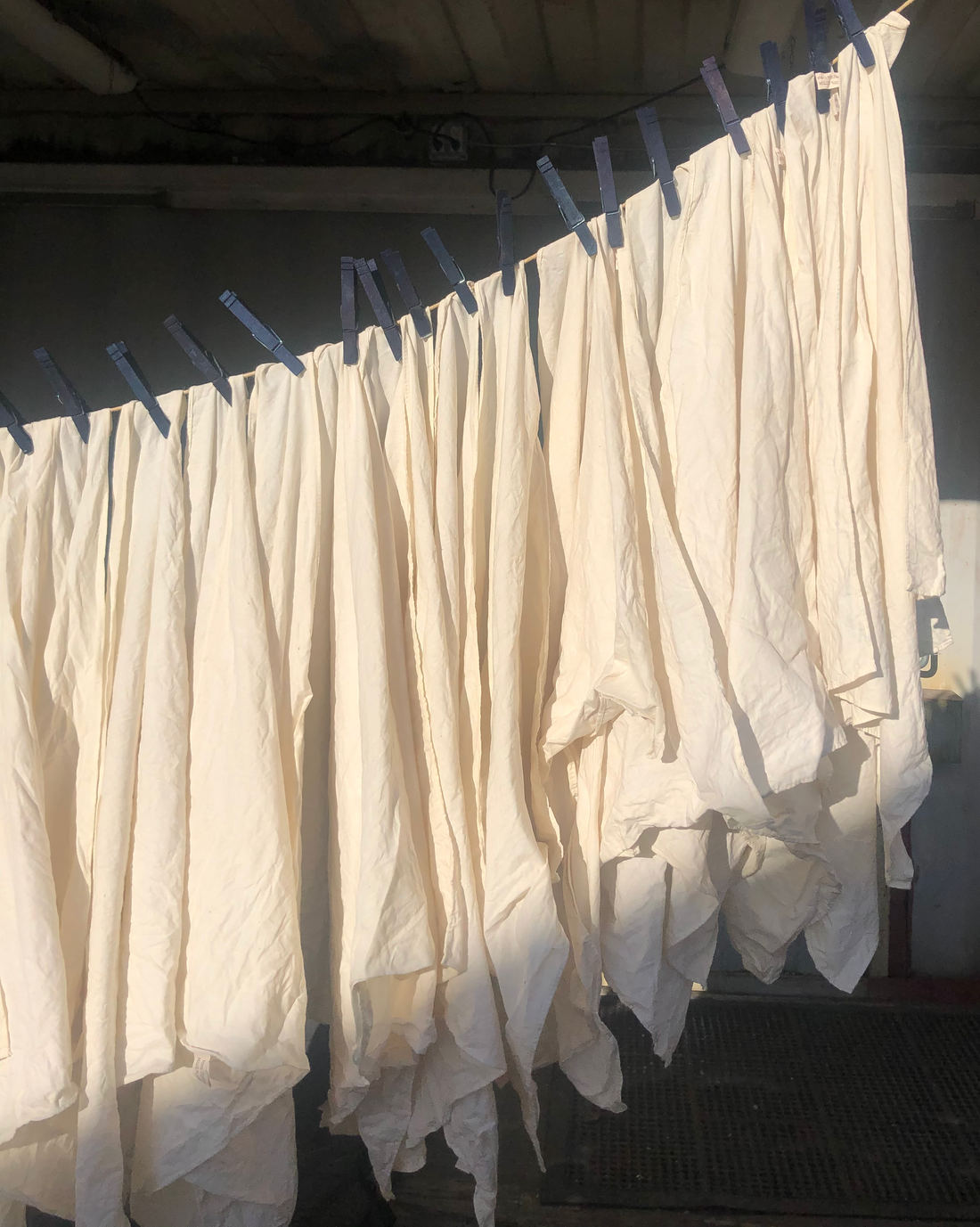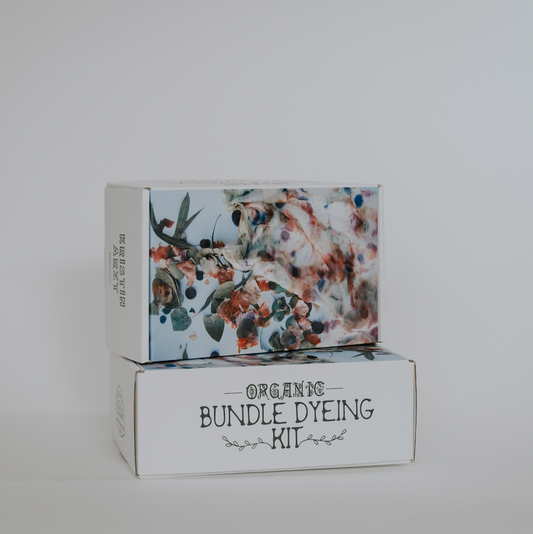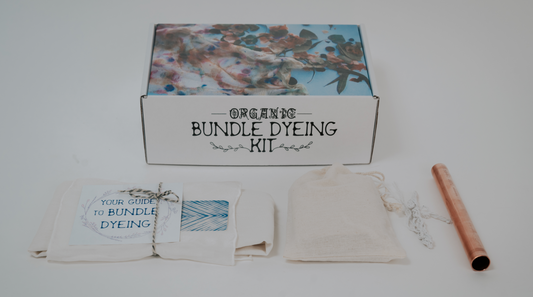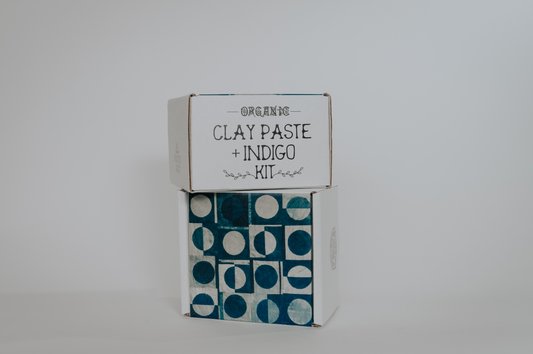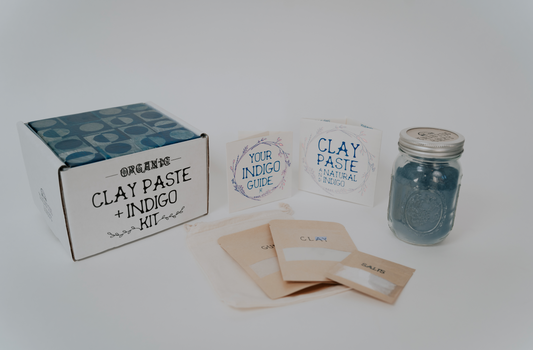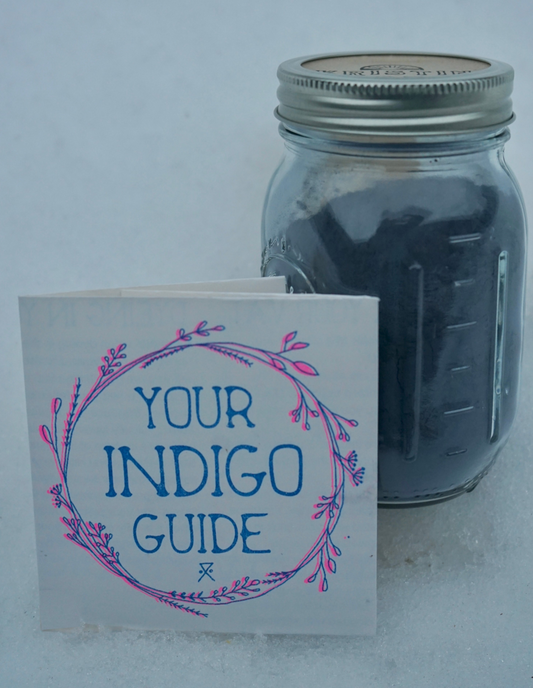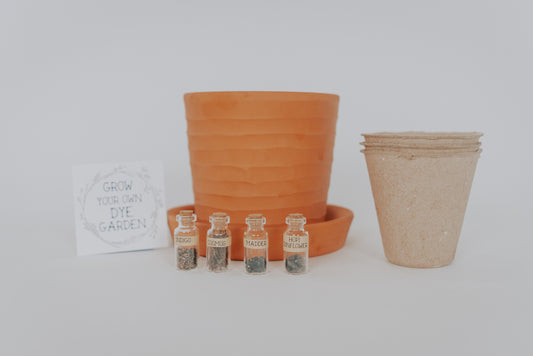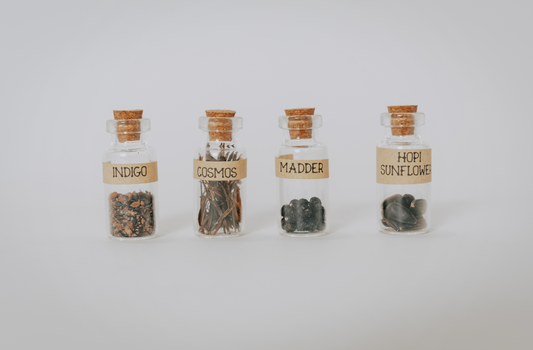A Step-by-step Guide to Pre-treating Plant-based Fabrics Before Dyeing

What is a Mordant?
Mordants are metal salts that chemically bond the pigment to the fiber during the dyeing process. The word mordant comes from the root “mord-” meaning “to bite” in Latin. You can think of the pigment actually biting into the fiber while your fabric is in the dye pot. There are a few different types of mordants available, and each gives you varying results. Aluminum-based metal salts will give you bright, clear colors. Ferrous, or iron, metal salts will give you earthy or what’s known as “saddened” colors.
What is a Tannin?
Tannins occur naturally in plants, especially in trees. Tree leaves, bark, galls, and branches are all excellent sources of tannins. Some tannins are clear, meaning they give no color, like oak galls and acorns. Other tannins will produce a yellow color, like myrobalan, or a pinkish-gray, like tara and some eucalyptus trees. Other tannins can be used as a one-step dye because their results are so strong, like cutch.
It is important to use a tannin when mordanting cellulose fibers to protect your fiber from sun exposure. The tannins absorb UV light when your fabric is in the sun, making it more light-fast and less likely to fade. Tannins also assist your fiber in accepting the mordant, which is step two in this fabric pre-treatment process.
What is Cellulose Fiber?
Cellulose fibers are plant-based fibers. Examples of cellulose fibers are cotton, hemp, linen, ramie, bamboo, rayon, Tencel, and more. These fibers require a two-step mordanting process, starting with a tannin treatment, followed by a mordant soak in metal salts.

Tools and Materials for Mordanting Fabric
- Tannin extract or whole plant material (tree leaves, bark, galls, acorns, etc.)
- Aluminum Sulfate
- Soda Ash
- Hot water
- Tongs
- Rubber gloves
- 2-3 pots that you do not use for cooking
This is a two-step process. Step 1 is the application of tannin. Step 2 is the application of the mordant, or metal salt.
7 Steps to Applying Tannin
Ingredients:
Tannin extract (gall, sumac, tara, myrobalan) or tannic acid at 10% weight of fiber (w.o.f.) • OR ground tannin plant material at 20-30% w.o.f.
1. Fill a plastic or stainless steel vessel with hot water (≈40-50°C/100-120°F).
2. Add the tannin and stir until dissolved or evenly distributed.
3. Place the textile in the bath and immerse it completely.
4. Soak the textile in the tannin bath for 1-2 hours, moving it occasionally to ensure even tannin penetration. The bath will cool during the process and there is no need to re-heat the bath. High temperatures will oxidize the tannin and potentially darken the textile.
5. Remove the textile from the tannin bath and, while wearing rubber gloves, squeeze excess back into the tannin bath. Save the tannin for re-use, if desired.
6. Rinse the tannin-soaked textile very lightly or, optionally, spin out excess tannin using a centrifuge or washing machine. Tannin is bound to the fiber only by affinity and can be removed if rinsed too aggressively.
7. Mordant the textile immediately after the tannin step, while still damp. If the textile is allowed to dry and must be wet out again, some of the tannin will be lost.
How to Mordant with Aluminum
Aluminum sulfate is the least expensive mordant. The recipe begins with two separate solutions: an aluminum solution and a soda ash solution. The amount of water in the solutions is not critical but it should be enough that the fabric can flow freely.
Ingredients
Aluminum sulfate at 12% weight of fiber. Dissolve the alum in enough boiling water (approximately 200% of the fiber weight) to completely dissolve the alum. Allow the solution to cool.
Soda ash Solution: Soda ash at 1.5% w.o.f. Dissolve the soda ash in enough boiling water to completely dissolve the soda ash. Allow the solution to cool.
7 Steps to Mordanting with Aluminum Sulfate
1. Combine the alum solution and the soda ash solution while stirring. Bubbles will form and then quickly subside when these two solutions mix together so be sure to use a large enough vessel to allow for this reaction.
2. Add additional warm water (around 100-120°F) as needed to allow the textile to be completely immersed.
3. Place the textile, which has been pre-treated with tannin, into the mordant bath.
4. Allow the textile to sit in the mordant bath for 1-2 hours, stirring occasionally.
5. While wearing rubber gloves, remove the textile and squeeze the excess mordant back into the bath. Save the mordant for re-use, if desired.
6. Rinse the textile well, to ensure that any unattached mordant is removed from the surface of the textile.
7. The textile may be dyed immediately or dried for future dyeing.
Fabric Mordanting FAQs
What are the different types of mordants?
There are a few different types of mordants available, and each gives you varying results. Aluminum-based metal salts will give you bright, clear colors. Ferrous, or iron, metal salts will give you earthy or what’s known as “saddened” colors.
Is vinegar a mordant?
Vinegar is not a mordant, but rather a pH modifier. After the dyeing process is complete, you can add your fabric to a mild vinegar-water bath. This slightly acidic solution will brighten the colors. Purples will become pinker and yellows more orange.
Is soy milk a mordant?
Soy milk is not a mordant, but as assist when dyeing. Pre-treating fiber in fresh soy milk attaches enzymes to your fabric that trick the pigment into thinking it is a protein fiber, often resulting in stronger and longer-lasting dye results.

